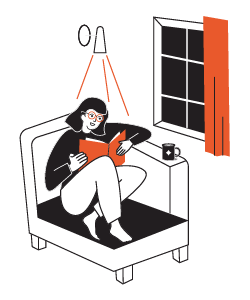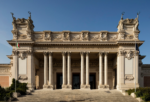Mono-ha
.jpg)
La Fondazione Mudima ritorna ad esporre (dopo la mostra Asiana organizzata a Venezia nel 1995) le installazioni del gruppo giapponese Mono-Ha, formato da dieci artisti e attivo tra il 1968 e il 1974.
Comunicato stampa
La Fondazione Mudima ritorna ad esporre (dopo la mostra Asiana organizzata a Venezia nel 1995) le installazioni del gruppo giapponese Mono-Ha, formato da dieci artisti e attivo tra il 1968 e il 1974. Il termine Mono-Ha si può tradurre con “La scuola delle cose” e fa riferimento all’utilizzo da parte dei suoi artisti di materiali semplici, sia naturali che provenienti dalla produzione industriale, presentati quasi “a nudo”, senza essere alterati nella propria essenza dall’intervento dell’artista.
Tessuti, rocce, legno, carta, corde, vetro vengono prediletti nelle installazioni presenti in mostra, tutti materiali usati per riconsiderare il rapporto tra l’arte, l’uomo ed il suo relazionarsi con lo spazio, con la materia e con l’evoluzione della realtà sociale. Gli artisti Mono-Ha (tutti rappresentati in mostra) sono: Koji Enokura, Noriyuki Haraguchi, Susumu Koshimizu, Lee Ufan,
Katsuhiko Narita, Nobuo Sekine, Kishio Suga, Jiro Takamatsu, Noboru Takayama
e Katsuro Yoshida.
Lo scopo degli artisti di Mono-Ha è quello di ravvicinare le cose e metterle in relazione, lasciando che questa giustapposizione produca il suo significato e comunichi al pubblico un nuovo modo di guardare e comprendere la realtà che abitualmente ci circonda. L’artista non crea ma più che altro riposiziona gli oggetti all’interno di un nuovo dinamismo energetico di materiali, di forze, di dimensioni, di textures, dove la relazione tra gli oggetti e lo spazio e la tensione che ne scaturisce, acquistano un’importanza decisiva. Emergendo oggi quale una delle principali espressioni dell’arte contemporanea giapponese del secondo Novecento, l’interesse di Mono-Ha consiste nel ricercare e rivelare la realtà oltre l’apparenza. Come ha scritto Lee Ufan, uno degli artisti e il teorico del gruppo: “In verità il lavoro dell’artista, invece di dar pace alla mente e serenità alla gente, è tutto volto ad esplorare in che misura lo sguardo della gente possa essere distolto dalle cose che essi hanno sempre creduto essere la realtà”.
La riscoperta e la rivalutazione critica di Mono-Ha è oggi uno degli argomenti più attuali dell’arte contemporanea. Lo dimostrano le recentissime mostre alla Punta della Dogana a Venezia, al museo d’arte contemporanea di Dallas e la presenza delle opere di Mono-Ha nelle collezioni della Tate Modern di Londra, del MOMA di New York e di numerosi musei internazionali. Mono-Ha, con la sua sensibile attenzione al mondo industriale da una parte ed alle dinamiche naturali dall’altra, costituisce un esempio imprescindibile per l’evoluzione attuale dell’arte contemporanea e delle tematiche artistiche legate alla eco-sostenibilità, alla problematica ecologica e ambientale.
After its presentation of the Asiana exhibition in Venice, at Palazzo Vendramin Calergi, in 1995, Fondazione Mudima now exhibits a series of Mono-ha installations on the part of the group of ten artists who came together under that name in Japan in 1968, and who then continued to exhibit together until 1974. “Mono-ha” is best translated as “The School of Things,” and the term refers to the artists’ use of simple materials, both natural and industrial, presented almost “nakedly,” with their essence remaining in no way altered by the artists’ interventions. Cloth, rocks, wood, paper, rope, and glass are the principal materials employed in these installations, and function on terms of a re-examination of the relationship between art and the human being, and as well of our typically human interactions with space and physical materials, and also with the patterns of shifting social realities. The Mono-ha group of artists (presented here in its entirety) consists of Koji Enokura, Noriyuki Haraguchi, Susumu Koshimizu, Lee Ufan, Katsuhiko Narita, Nobuo Sekine, Kishio Suga, Jiro Takamatsu, Noboru Takayama and Katsuro Yoshida.
The Mono-Ha artists aimed to establish a more immediate rapport with things, and to draw them into relationship with one another, allowing their juxtapositions to produce new meaning and to introduce the public to novel ways of seeing and understanding the world of reality that surrounds us. The artist is less concerned with “creativity” than with a repositioning of material objects in the light of a new and powerful dynamism of phenomenological forces, dimensions, textures, and physical qualities in which the relationships and resultant tensions between objects and space take on cardinal importance. Mono-ha is now increasingly recognized as one of the major expressions of the contemporary Japanese art of the second half of the twentieth century, and its interest lay in searching out and revealing the realities beyond appearance. Lee Ufan, who in addition to promoting the founding of the group was also its theoretician, has written, “In truth, the work of the artist has nothing to do with offering peace and serenity to people’s minds, and instead is entirely directed toward exploring the degree to which the gaze of the individual can be released and turned away from the things which have always and collectively been believed to constitute reality.”
The rediscovery and critical re-evaluation Mono-ha is one of today’s most pressing arguments in the world of contemporary art, as attested by the recent shows at Punta della Dogana in Venice and the Dallas Museum of Contemporary Art, as well as by the presence of Mono-ha works in the collections of London’s Tate Modern, New York’s MOMA and numerous other museums of international standing. With its particular attention to the world of industry, on the one hand, and, on the other, to the dynamics of nature, Mono-ha is an undeniable example of the present-day evolution of contemporary art towards themes connected to ecological sustainability and the problems that center on our planet’s natural environment.



